- Total Pharmacy® August 2025
- Volume 03
- Issue 04
Navigating Legal, Billing Challenges in Pharmacists’ Clinical Services
Dae Lee, PharmD, Esq, CPBS, discusses the legal and billing challenges hindering pharmacy practices and opportunities to overcome them.
The legal and billing challenges within the pharmacy business have historically served as roadblocks for independents looking to maximize revenue. While the end goal of the independent pharmacy business is to bring valued care to the community, navigating these challenges is almost as important to financially support a pharmacy’s ability to deliver care.
At the Total Pharmacy Solutions Summit Spring 2025 event, Dae Lee, PharmD, Esq, CPBS, and shareholder at Buchanan, Ingersoll & Rooney PC, hosted a session titled “Navigating Legal and Billing Challenges in Pharmacists’ Clinical Services: Compliance, Reimbursement, and Opportunities.”
During the session, Lee discussed compliance, credentialing, and provider status of pharmacists in detail. With his background in law, he provided a unique perspective, offering real-world evidence of the successes, challenges, and opportunities often presented to community pharmacies.
READ MORE:
Read on for some key takeaways from Lee’s presentation:
- Independent pharmacies must diversify revenue streams due to increasing pressures from pharmacy benefit manager (PBM) reimbursement cuts, reduced coverage, and frequent audits. Solely relying on dispensing is no longer financially sustainable, and expanding into clinical services offers a viable path forward.
- Vertical integration by PBMs is reshaping the industry in ways that harm independents. Large corporations now own the entire health care supply chain—from insurance plans to PBMs to chain pharmacies—making it harder for community pharmacies to compete fairly or access the same patient base.
- Billing for clinical services under medical benefits is a critical, untapped opportunity. Unlike traditional drug claims, clinical services (such as point-of-care testing or chronic disease management) can be billed to insurers as medical claims, offering pharmacies a chance to expand services and increase reimbursement.
- Pharmacists are increasingly recognized as health care providers at the state level. Many states have enacted laws that allow pharmacists to prescribe, order lab tests, and bill for clinical care, especially following their frontline response during COVID-19. This shift is redefining the pharmacist’s role in the health care ecosystem.
- Medical claims billing requires different infrastructure and processes than traditional pharmacy claims. This includes using Centers for Medicare & Medicaid Services 1500 forms, Current Procedural Terminology/International Classification of Diseases, Tenth Revision codes, and electronic health records. Pharmacies must invest in the right systems and training to successfully participate in this new revenue model.
- Credentialing is essential before billing any payer and involves multiple requirements. Pharmacists must obtain a Type I National Provider Identifier, maintain an active license in good standing, carry appropriate liability insurance, and complete often-complex enrollment and credentialing applications for each payer.
- Past legal or disciplinary issues can significantly impact a pharmacy’s ability to bill medical services. Board actions, even minor ones, must be disclosed to payers and PBMs and can lead to denied applications or network terminations. Legal representation should be sought early in any investigation to mitigate these risks.
- Audit and compliance risks remain high and must be carefully managed. Success in clinical billing depends not just on performing the service, but on documenting it correctly, ensuring staff are properly trained, and implementing systems to withstand payer scrutiny.
- California is currently a national leader in pharmacist provider status legislation. With its Senate Bill No. 493 and similar measures, the state has paved the way for pharmacists to bill for clinical services under medical benefit plans—a model that could be replicated in other states with the proper advocacy.
- The best approach is to start small and scale clinical services strategically. Pharmacies can begin with 1 or 2 high-impact services (such as point-of-care testing or chronic care consults), identify aligned local prescribers, and gradually build infrastructure and payer relationships with the help of legal and billing experts.
“Pharmacies delivered millions of vaccines, testing services, [and] clinical consultation during [the COVID-19 pandemic]. Several states are qualifying that expanded scope and letting pharmacists initiate treatment, order labs, [and] bill insurers directly,” said Lee. “This is a chance to redefine our role of community pharmacies in care delivery, especially in underserved areas. We all need to take advantage of that [and] put a lot of pressure on those positive movements.”
To read these stories and more,
Articles in this issue
Newsletter
Pharmacy practice is always changing. Stay ahead of the curve with the Drug Topics newsletter and get the latest drug information, industry trends, and patient care tips.













































































































































